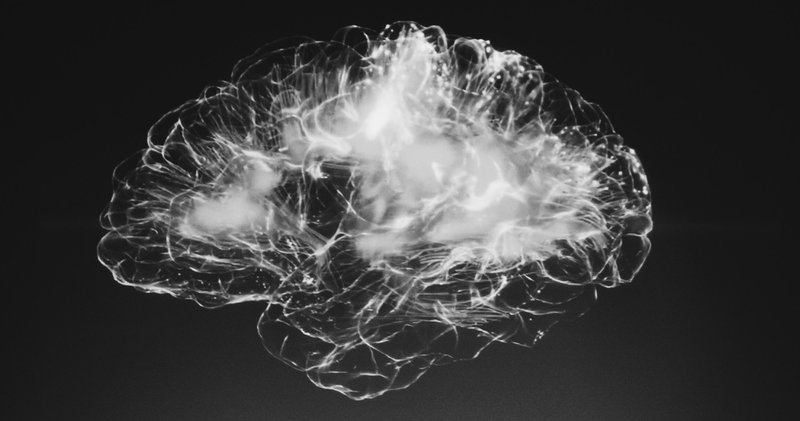When exploring the science behind erectile dysfunction, it's important to cover the basics. There are 4 types of erections. We discuss all four, as well as the the coordination of different systems in the body resulting in a well-orchestrated symphony.
Science Behind Erectile Dysfunction – Table of Contents
- What is The Definition of Erectile Dysfunction?
- Four Different Types of Erections
- The Science Behind It All: It’s A Symphony
- It Starts With The Brain
- Common Issues
- International Erectile Dysfunction Questionnaire
- Links and Resources
What is The Definition of Erectile Dysfunction?

We're going to start talking about the basics first, the foundation anatomy and physiology of sexuality and particularly how an erection happens and what goes on in the body when this happens is actually quite complex.
So when we talk about the Science Behind Erectile Dysfunction, let's first start with what defines Erectile Dysfunction; Erectile Dysfunction is defined as:
Erectile Dysfunction Definition: The persistent inability to achieve or maintain penile erection sufficient for satisfactory sexual performance
So that means that it can include struggling to have an erection or a long enough erection to complete intercourse or an inability to ejaculate, so it's a whole spectrum of a partial erection all the way to not able to ejaculate. According to a very well-known and quoted study, there are at least 30 million men in the US with ED, but that study was done in the early 2000's and it's probably a lot more now compared to when that study was published. So now we have a definition of what ED is, so let's talk about how an erection happens.
Four Different Types of Erections

First and foremost, there are four types of erection, did you know that?
1. The Visual Erection
There are four types of erection; the first one is by visual, that's when you are stimulated by visual stimuli, the senses, the smell, even taste and it starts in the brain and then it increases blood flow going to the penis. Know that every time we talk about the brain, the brain is the largest sexual organ of the body, everything starts in the brain. If you don't pay attention to what's going on in the brain, nothing's going to work down below and that's the reason why it's up on top.
2. Psychogenic Erection
The second type of erection is Psychogenic Erection and it is triggered by thought and nerves in the brain that sends messages down to the penis.
3. Reflux Erection
Then the third type of erection is called Reflux Erection where touch to the penis causes the reflux which actually does not involve the brain, it's just a touch to the penis and then it sends messages to the nerves and the spinal cord in the pelvic area and is just a loop, it just kind of bypasses the brain and that's called reflux.
4. Nocturnal or Nighttime Erection
Then the fourth one is called Nocturnal or Nighttime Erection, which only occurs during rapid eye movement or REM sleep. So when you have REM sleep it is when you dream, so if you don't dream as much or don't sleep as well, you're not going to have a nocturnal or morning erection. That's one of the reasons why sleep is very important.
The Science Behind It All: It’s A Symphony

So let's get back to the orchestration and how an erection works. It's actually a very complex reaction in your body that involves multiple systems in your body. For an erection to happen, the brain has to be in a good place, so the brain sends messages to the spinal cord, which are the nerves in the neck, down to the sacrum area, so your nerves have to be working well.
Then hormones have to be released, that the hormones are released in the pituitary gland in the brain. Then your neurotransmitters are these messengers that the nerves release that has to work well and then the arteries have to work well and the veins as well and all of this has to be orchestrated and synchronized for an erection to happen.
If one of those systems is not working well, then you will not have a full erection or an erection cannot maintain, so that's one of the reasons why ED is more common because there are so many multiple steps that are involved for an erection to happen. It starts from the brain, it goes down to the penis and the penis can actually get engorged to at least 10 times the blood flow than in a flaccid state. That is something that I want to stress is that there's a lot going on, multiple steps. When you involve multiple steps, there are more chances that something may not work well.
It Starts With The Brain

So let's start first on how an erection happens:
- The brain gets stimulated, then it goes to the nerves down your spinal cord, and then the nerves send neurotransmitters to the blood vessels
- The blood vessels dilate and open up, and then the blood goes to the penis and enlarges the penis.
- Think of the tissues of the penis as the Corpus Cavernosum and the Corpus Spongiosum. Think of the penis like a sponge and it gets filled up with water. When it gets filled up with water or blood, it engorges and then because the penis is wrapped in a fibrous sheet, when it engorges, that sheet actually compresses the vein that is next to the sheet.
- Therefore, when the veins are compressed, the blood is kept in the penis and it doesn't drain out of the penis. Therefore, you have an erection that is maintained.
Common Issues
Most often, the problem with ED is it happens either in the arteries or in the veins and vein leakage is the most common. Therefore, if the valves and the veins are not working well, you'll have leakage and therefore present more as an erection that is partial or an erection that is not maintained as well.
I also want to stress that at ED doesn't mean that you cannot have an erection. You can still have an erection and still have ED.
International Erectile Dysfunction Questionnaire
One of the questionnaires that I advocate that men take is called the International Erectile Dysfunction questionnaire or the SHIM test, S. H. I. M. I'll put that link on the show notes. When you take the test, it's only five questions and you answer it and your activity for the last four weeks, it will give you a score and depending on your score, you will know how your sexual performance is or whether you may or may not have ED.
Know that 67% of men do not know that they have ED even though they show signs of ED.
So we've talked about the anatomy of how an erection happens and know that it is such a complex process and the brain is the filter.
Only 10% Of Common Issues Are Psychological
You have to be in the mood as well, but one thing I want to stress is that 90% of ED is really more physical causes and only 10% are more psychological, more performance, anxiety, trauma.
So if you have ED, 90% of the time it's probably going to be physical.
We'll discuss that more in the later episodes on what causes ED and we've already talked about how ED can happen because of the multiple systems that I talked about as well. So to summarize, an erection is a complex mechanism that occurs and if it is working well, great!
Links and Resources
Thanks for listening, watching or reading.
- Be sure to go to my website at sexualhealthformenpodcast.com for more resources.
- And remember to join my men's club at men1.club, a place where I help a community of men regain their sexual confidence.
- Check out my book on Amazon
If you like the show, I would appreciate it if you subscribe, leave a review on Apple Podcasts or wherever you listen. And know that you have sexual vitality for life.
